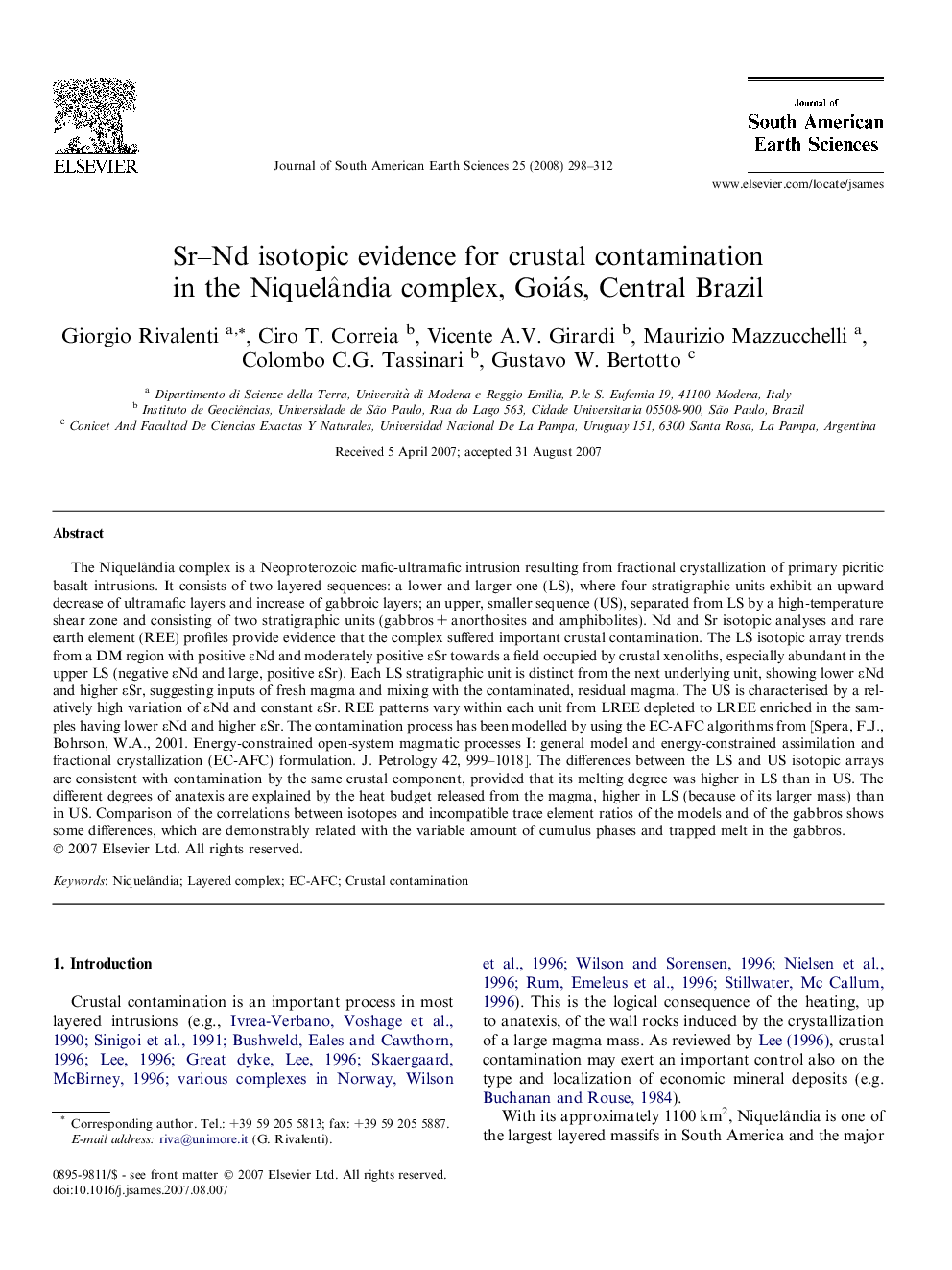| کد مقاله | کد نشریه | سال انتشار | مقاله انگلیسی | نسخه تمام متن |
|---|---|---|---|---|
| 4682989 | 1348959 | 2008 | 15 صفحه PDF | دانلود رایگان |

The Niquelândia complex is a Neoproterozoic mafic-ultramafic intrusion resulting from fractional crystallization of primary picritic basalt intrusions. It consists of two layered sequences: a lower and larger one (LS), where four stratigraphic units exhibit an upward decrease of ultramafic layers and increase of gabbroic layers; an upper, smaller sequence (US), separated from LS by a high-temperature shear zone and consisting of two stratigraphic units (gabbros + anorthosites and amphibolites). Nd and Sr isotopic analyses and rare earth element (REE) profiles provide evidence that the complex suffered important crustal contamination. The LS isotopic array trends from a DM region with positive εNd and moderately positive εSr towards a field occupied by crustal xenoliths, especially abundant in the upper LS (negative εNd and large, positive εSr). Each LS stratigraphic unit is distinct from the next underlying unit, showing lower εNd and higher εSr, suggesting inputs of fresh magma and mixing with the contaminated, residual magma. The US is characterised by a relatively high variation of εNd and constant εSr. REE patterns vary within each unit from LREE depleted to LREE enriched in the samples having lower εNd and higher εSr. The contamination process has been modelled by using the EC-AFC algorithms from [Spera, F.J., Bohrson, W.A., 2001. Energy-constrained open-system magmatic processes I: general model and energy-constrained assimilation and fractional crystallization (EC-AFC) formulation. J. Petrology 42, 999–1018]. The differences between the LS and US isotopic arrays are consistent with contamination by the same crustal component, provided that its melting degree was higher in LS than in US. The different degrees of anatexis are explained by the heat budget released from the magma, higher in LS (because of its larger mass) than in US. Comparison of the correlations between isotopes and incompatible trace element ratios of the models and of the gabbros shows some differences, which are demonstrably related with the variable amount of cumulus phases and trapped melt in the gabbros.
Journal: Journal of South American Earth Sciences - Volume 25, Issue 3, May 2008, Pages 298–312